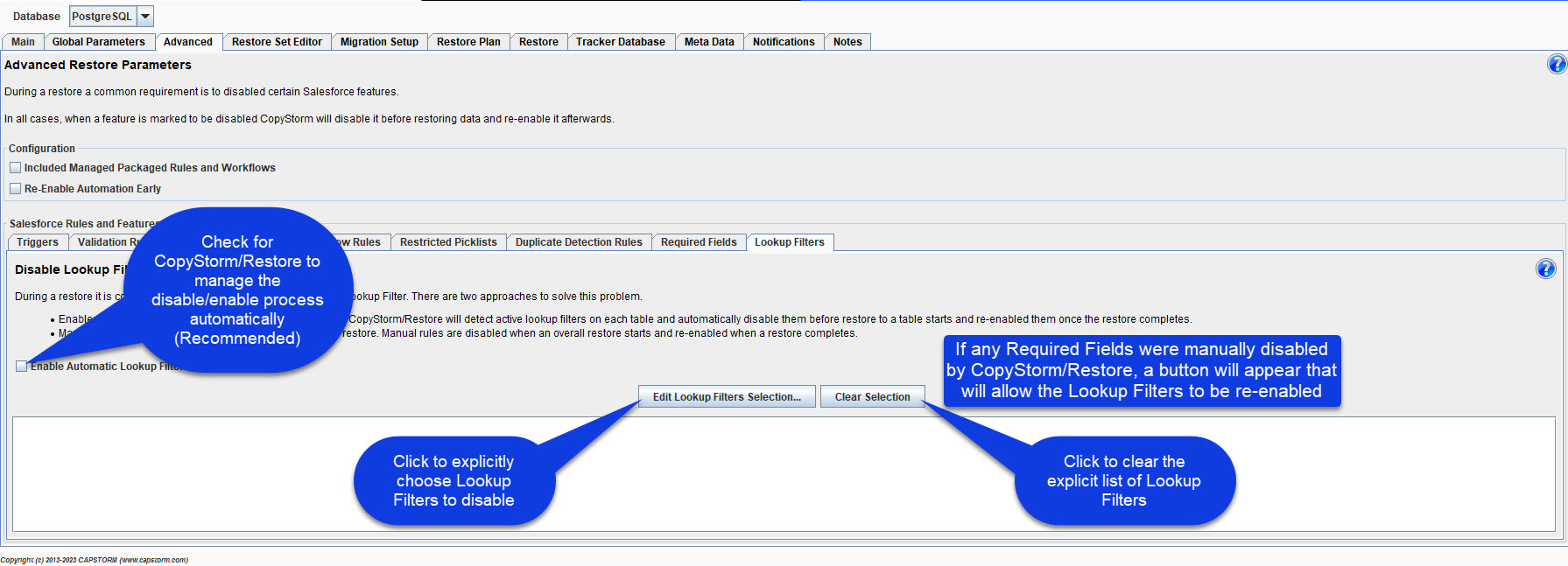Advanced Tab
The Advanced Tab supports control of what Salesforce triggers, validation rules, flows, workflows, and restricted picklists are temporarily disabled during a restore. Note than any item disabled by CopyStorm/Restore will automatically be re-enabled when a restore completes or is cancelled.
Why are these features necessary? Let’s look at a few examples:
- There is a Salesforce trigger that initiates notifications for Opportunities larger than $50,000. During a restore running this trigger would be a bad idea.
- Validation rules have changed over time and much historical data will not pass the current rules. Disable the rules during a restore.
Control of the following item types is supported:
Configuration
- Configure the scope of automation management to include Rules and Workflows from Managed Packages.
- Configure the timing of automation re-enablement.
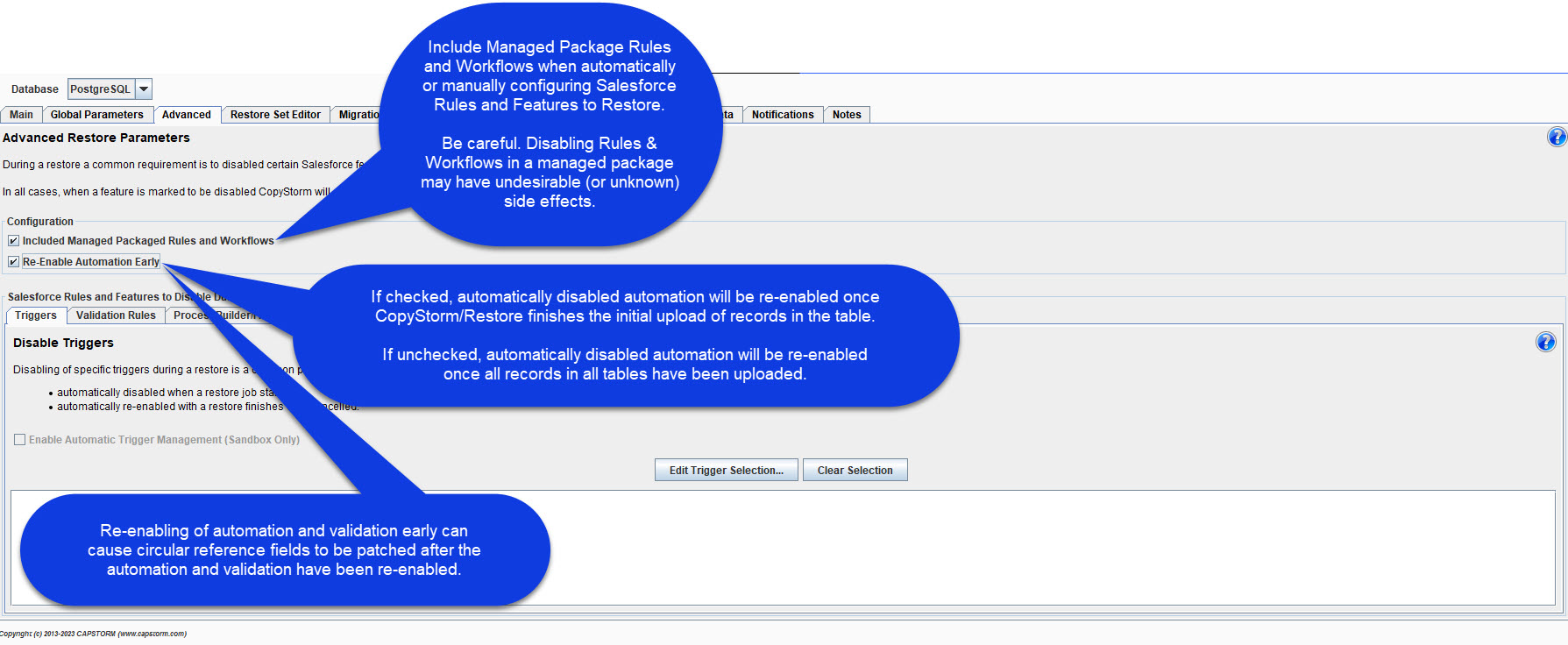
Triggers
Disabling triggers during a restore is a common necessity. For example, if an Opportunity trigger sends an email on large opportunity creation you will want to avoid this when restoring to a sandbox. Another common problem is triggers which are not designed to handle large blocks of records and when they receive a large block they exceed the Apex statement limit per transaction.
When a trigger is added using the Edit Trigger Selection button, CopyStorm/Restore will disable the trigger at the beginning of the restore process and re-enable it after the restore completes or is cancelled. Note that on a sandbox the disablement/enablement of triggers is relatively fast, but on a production environment changing the enablement status of a trigger will cause unit tests to run.
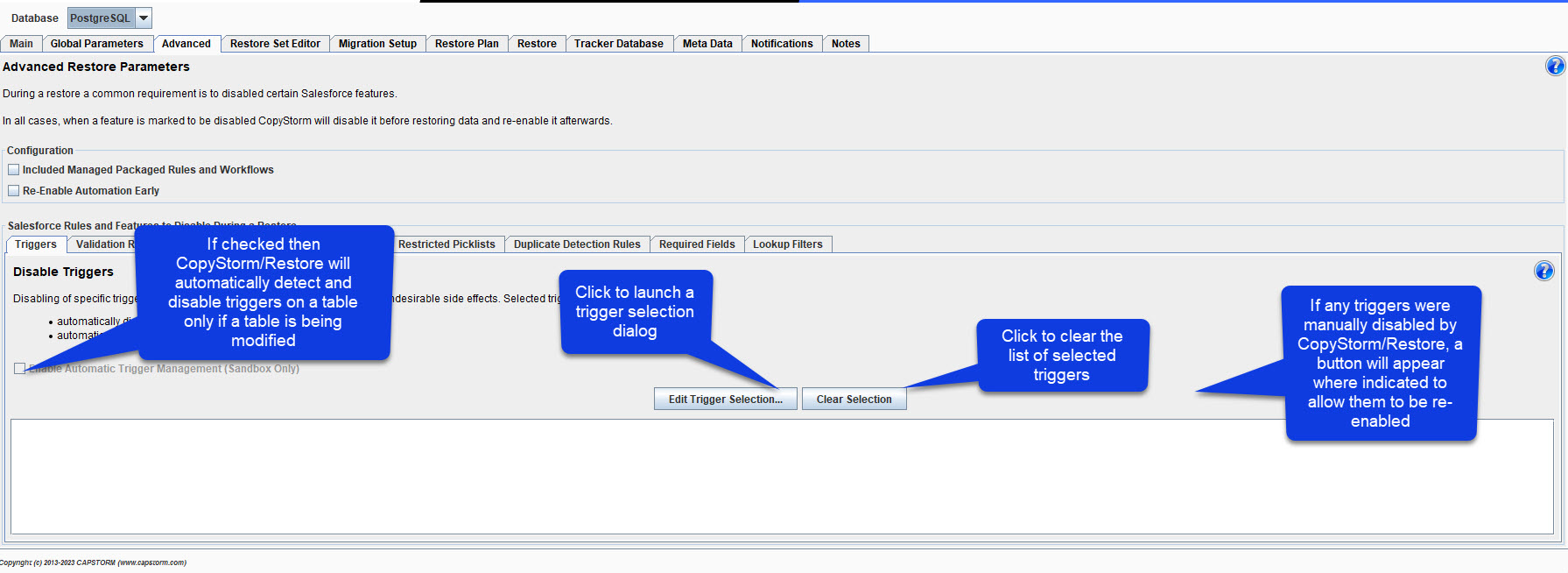
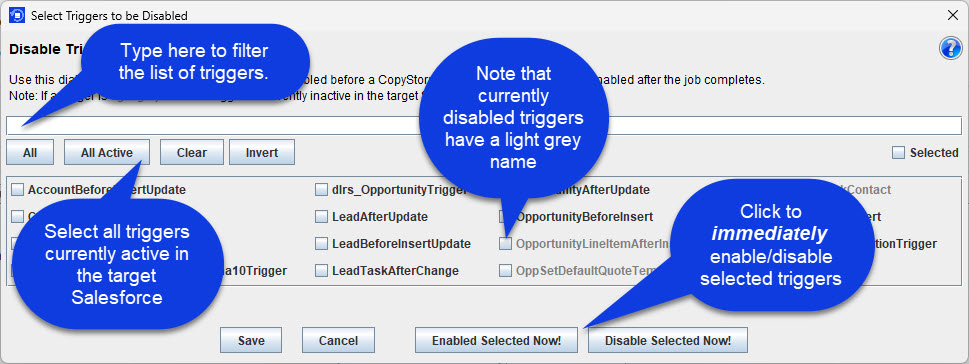
Validation Rules
Disabling validation rules during a restore is a common process because older data will often not pass the current validation rules.
In most cases, letting CopyStorm/Restore manage validation rule disablement/enablement is sufficient. When this option is enabled:
- CopyStorm/Restore disables active validation rules for a table just before data is written to the table.
- Once updates/inserts to a table are complete, CopyStorm/Restore re-enables the validation rules it disabled in the previous step.
If updates to one table cause updates in another table (for example: an OpportunityLineItem change can cause an update to the Opportunity table) then it may be necessary to explicitly choose validation rules to disable. If a rule is explicitly selected then the rule will be disabled at the beginning of the restore process and re-enabled when the restore process completes or is cancelled.
If automatic management is enabled and a validation rule appears in the explicit list then the automatic management system will ignore the rule.
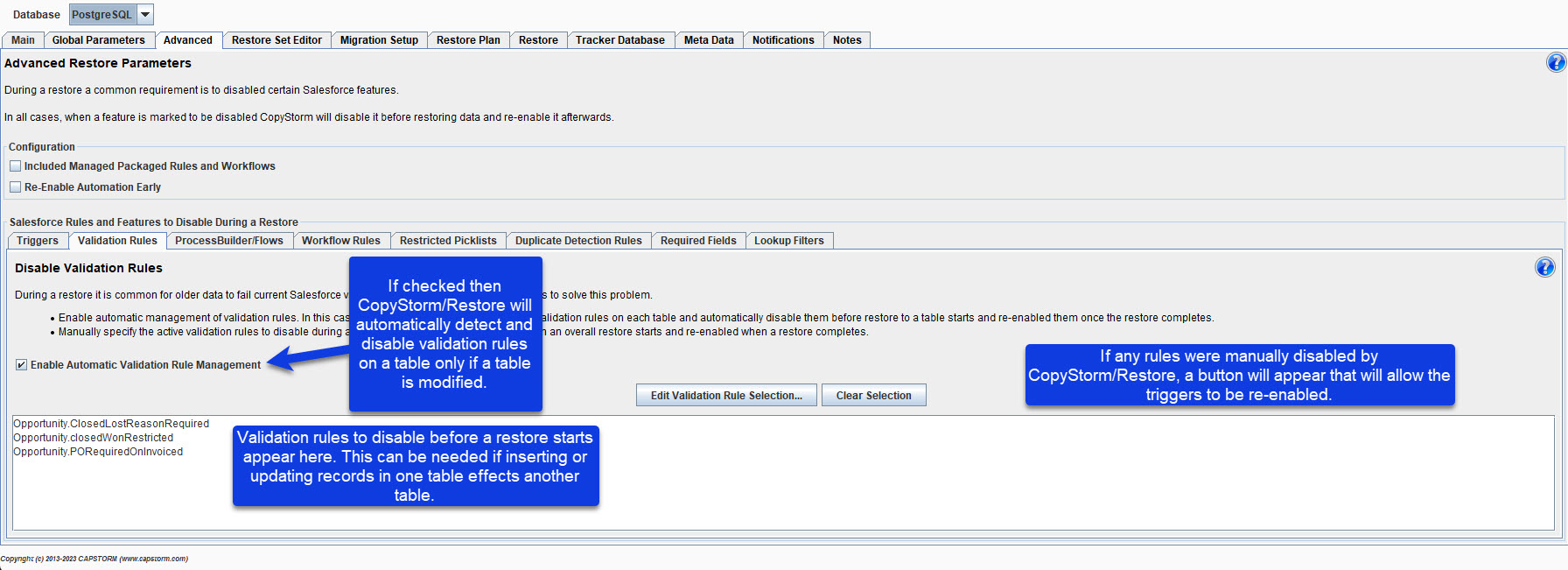
Process Builder/Flows
Disabling ProcessBuilder/Flows during a restore is a common necessity to avoid processing. For example, if an Opportunity flow sends an email on large opportunity creation you will want to avoid this when restoring to a sandbox.
When a Flow is added using the Edit Flow Selection button, CopyStorm/Restore will disable the Flow at the beginning of the restore process and re-enable it after the restore completes or is cancelled.
When a Flow is selected, the current version of the Flow is displayed. When CopyStorm/Restore disables the flow as part of the restore process, it will query Salesforce for the current active version – and disable the active version (and re-enable the disabled version when the restore is finished).
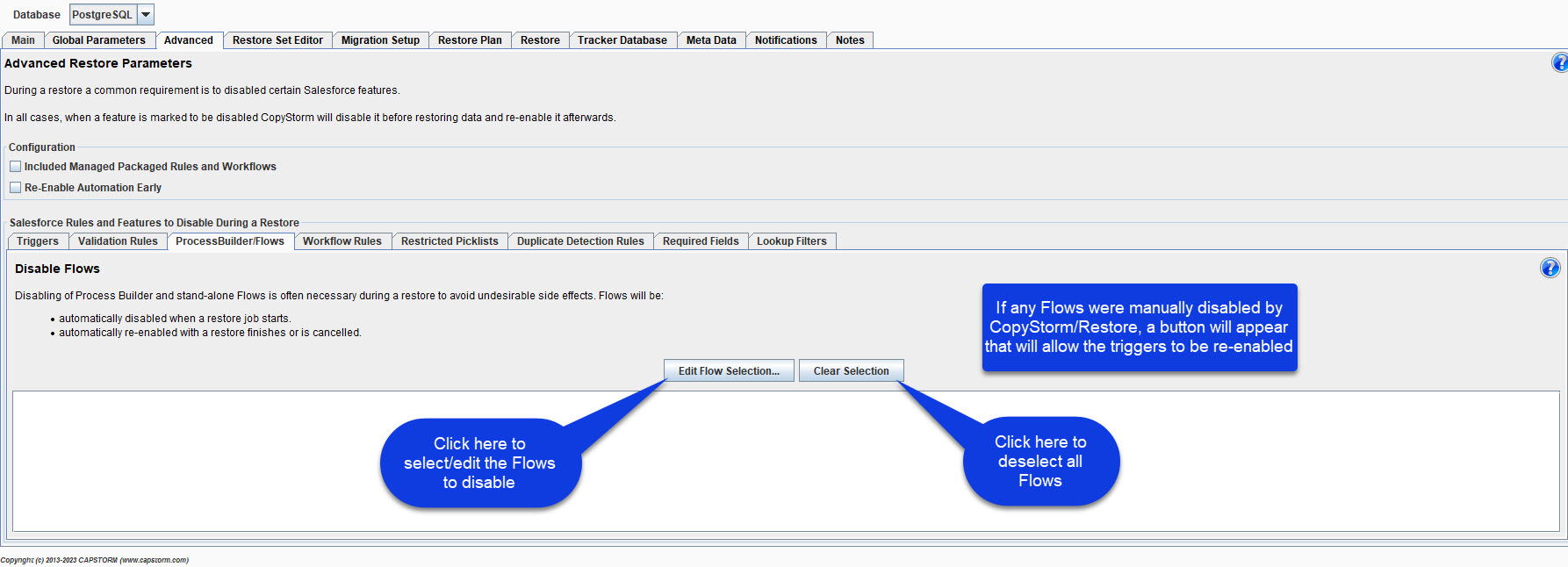
Workflow Rules
Disabling workflow rules during a restore is a common process to avoid a process that normally happens when a user enters/modifies a record via the GUI.
In most cases, letting CopyStorm/Restore manage workflow rule disablement/enablement is sufficient. When this option is enabled:
- CopyStorm/Restore disables active workflow rules for a table just before data is written to the table.
- Once updates/inserts to a table are complete, CopyStorm/Restore re-enables the workflow rules it disabled in the previous step.
If automatic management is enabled and a workflow rule appears in the explicit list then the automatic management system will ignore the rule.
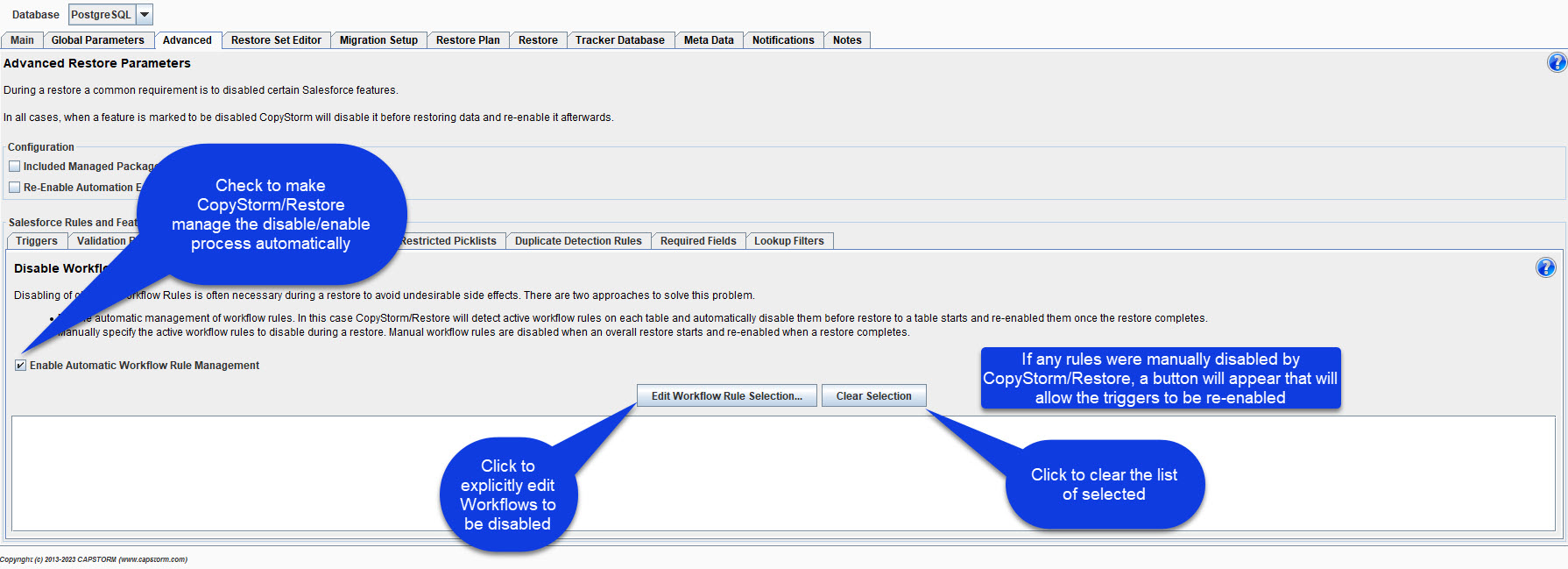
Restricted Picklists
Disabling restricted picklists during a restore is a common process to avoid encountering errors with older records whose values do not meet the criteria of the current picklist definition.
In most cases, letting CopyStorm/Restore manage restricted picklist disablement/enablement is sufficient. When this option is enabled:
- CopyStorm/Restore disables active restricted picklists for a table just before data is written to the table.
- Once updates/inserts to a table are complete, CopyStorm/Restore re-enables the restricted picklists it disabled in the previous step.
If automatic management is enabled and a restricted picklist appears in the explicit list then the automatic management system will ignore the rule.
Note that this element will not disabled a Global Picklist (a picklist defined outside of the confines of a specific table).
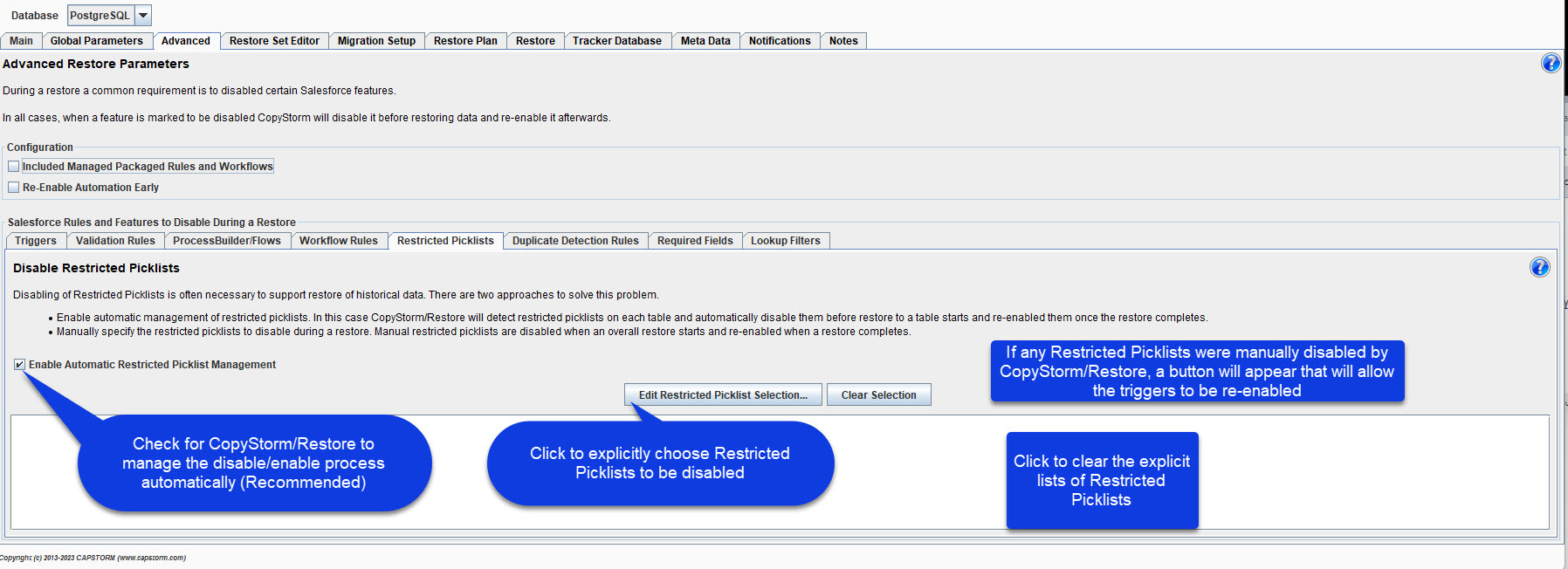
Duplicate Detection Rules
Disabling Duplicate Detection rules during a restore is a common practice needed to restore older data whose values do not meet current duplicate rule criteria.
In most cases, letting CopyStorm/Restore managed duplicate detection rule disablement/enablement is sufficient. When this option is enabled:
- CopyStorm/Restore disables active Duplicate Detection rules for a table just before data is written to the table.
- Once updates/inserts to a table are complete, CopyStorm re-enables disabled Duplicate Detection rules.
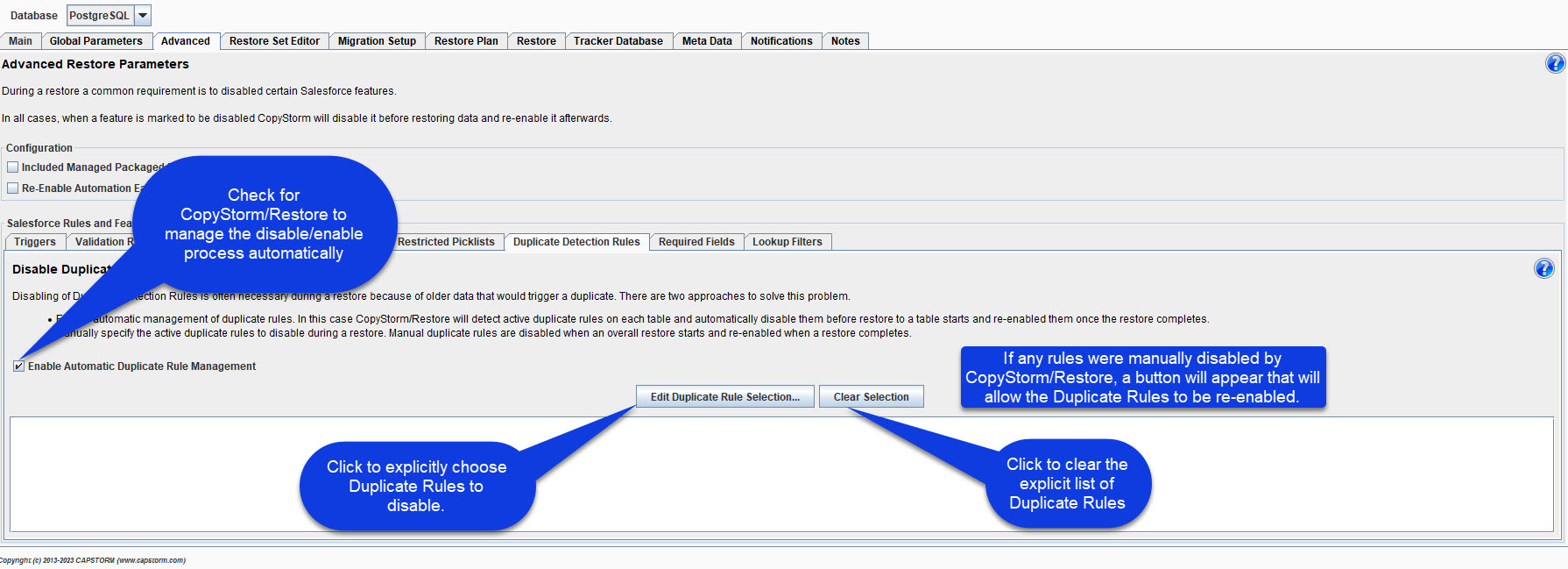
Required Fields
Disabling Required Field rules during a restore is a common practice needed to restore older data that may not have a value for a new field or a field that was not historically required.
In most cases, letting CopyStorm/Restore managed required field disablement/enablement is sufficient. When this option is enabled:
- CopyStorm/Restore disables the “Required” option for a field just before data is written to the field’s table.
- Once updates/inserts to a table are complete, CopyStorm re-enables disabled “Required” options.
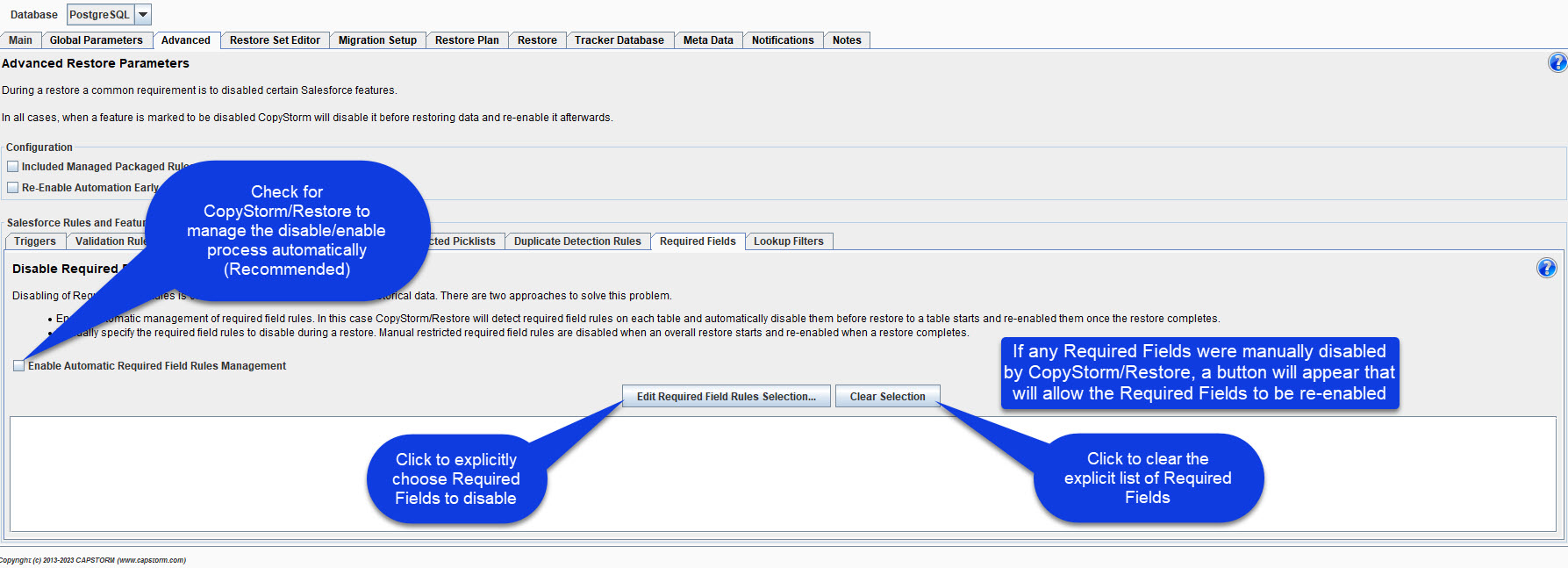
Lookup Filters
Disabling Lookup Filters during a restore is a common practice needed to restore older data that may not have reference fields that match current Lookup Filter validations.
In most cases, letting CopyStorm/Restore managed lookup filter disablement/enablement is sufficient. When this option is enabled:
- CopyStorm/Restore disables the Lookup Filter rules for a field just before data is written to the field’s table.
- Once updates/inserts to a table are complete, CopyStorm re-enables disabled Lookup Filter options.
